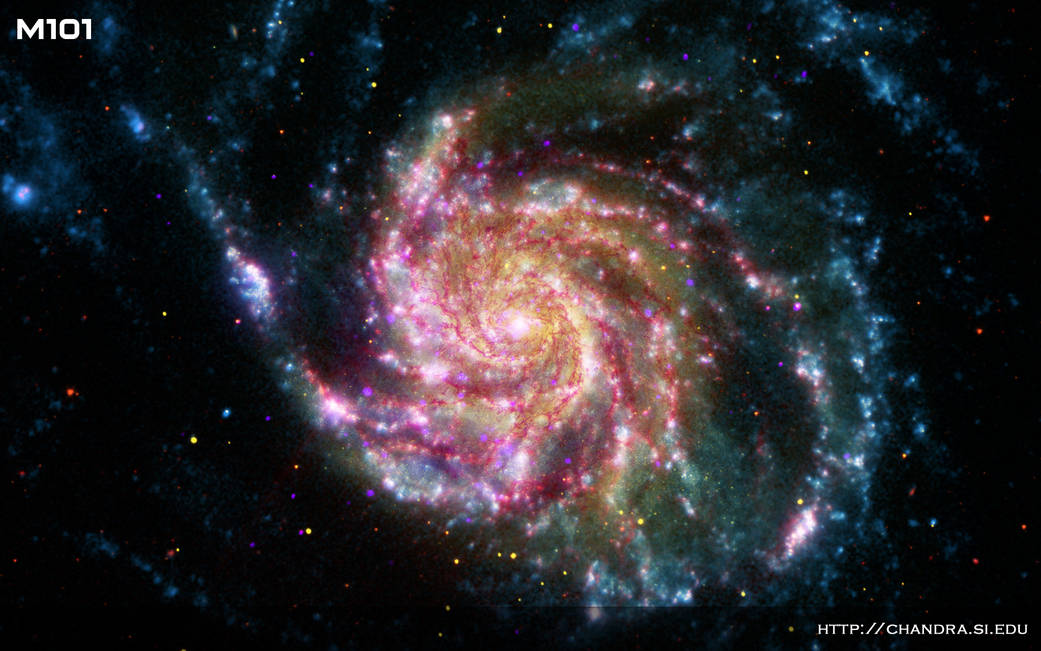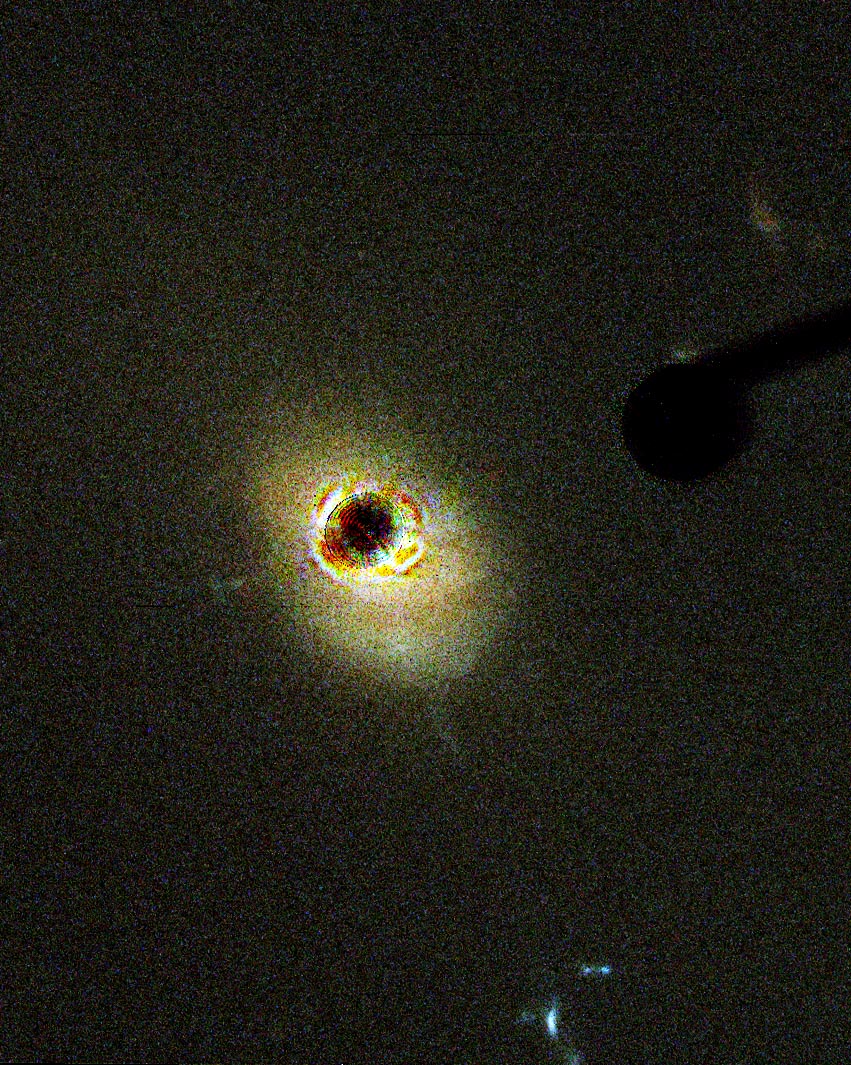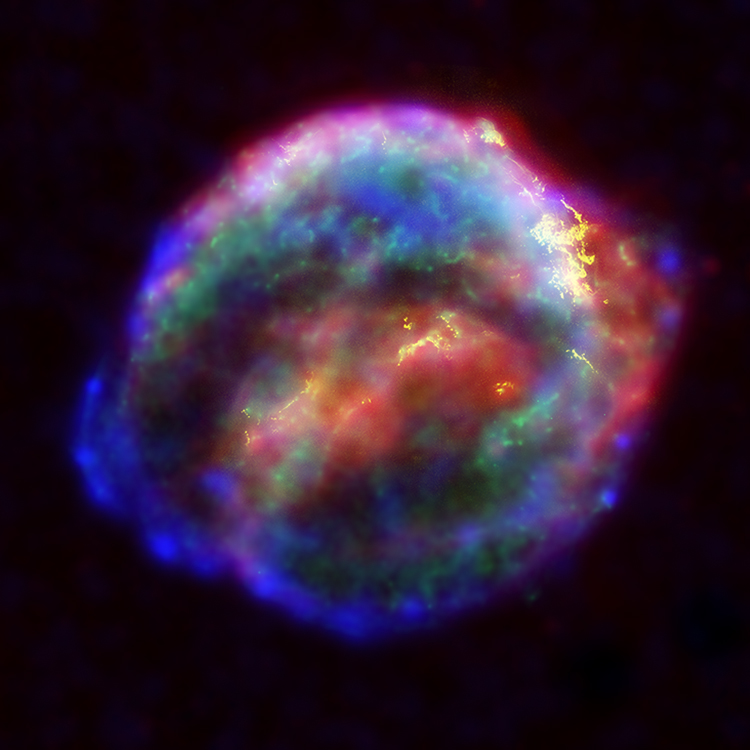Updated 14 January 2025 (c) 2025
Introduction
In the past few decades, modern science has uncovered a universe that is far vaster and more awe-inspiring than ever imagined before, together with a set of elegant natural laws that deeply resonate with the idea of a cosmic lawgiver (and isn’t it remarkable that we humans can uncover and understand these laws). In spite of these exhilarating developments, some writers, principally of the creationist and intelligent design schools, prefer instead a highly combative approach to science, particularly to traditional topics such as geology and evolution. One central tenet of creationism is that the Earth (or even the entire universe) was created over a very short period of time, either six literal days or at most 6,000 years, and that this creation was completed about 4,000 BCE (see Creationism). Needless to say, this worldview is in utter disagreement with the findings of modern science, which pegs the age of the Earth at approximately 4.5 billion years, and the age of the universe at approximately 13.8 billion years. Accommodating these very well established scientific facts in a creationist framework requires some tricky theological footwork.
One such attempt was made by Philip Henry Gosse in 1857. In his book Omphalos, Gosse proposed the imaginative hypothesis that God had created the Earth 6,000 years ago, in accordance with biblical scripture, and further that the creation was complete with all the indications of an ancient origin and evolutionary history, right down to ancient-looking fossils embedded in rocks. His book was not well received, to put it mildly. Commentators at the time rejected the theory as “too monstrous for belief,” and the book faded into obscurity [Rogers2011, pg. 101].
But in our own time, Gosse’s theory has been revived. Creationist Henry Morris, for one, acknowledged the evidence for an extremely old Earth and universe, but explained this discrepancy by saying that God created the world with an “appearance of age” [Whitcomb1988, pg. 233-238; Morris2000, pg. 203]. He writes, for instance [Whitcomb1988, pg. 355-357]:
This creation must have included all the chemical elements already organized in all the organic and inorganic chemical compounds and mixtures necessary to support the processes of the Earth and of life on the Earth. These processes include the phenomena of radioactivity.
In another work Morris theorized [Boardman1973, pg. 26]:
[T]he light rays … must have been created carrying information descriptive of historical physical events (such as super novae) which never actually occurred, because we would now be observing light rays which were created in transit and never were radiated from the stars which they seem to image.
Creationist Edmond Holroyd, in an article published on the Answers in Genesis website, comments on a supernova that exploded about 3,000 years ago in the Magellanic Clouds, which is 169,000 light-years from Earth. He then asks [Holroyd2011]:
Did that star actually explode that many years ago? Or did God, only a few thousand years ago, make a self-consistent field of electromagnetic waves (including light) that has only recently given us the appearance of an exploding star? Here is another example in which there is an appearance of age.
Creationist Jason Lisle rejects Holroyd’s light-created-in-transit theory, but in the end concludes that since stars were made during creation week by supernatural means, we need not be concerned with discrepancies in the time frame that has elapsed [Lisle2007]. Similarly, R. Albert Mohler, President of the Southern Baptist Theological Seminary, “accept[s] without hesitation the fact that the world indeed looks old,” but explains that the “appearance of the cosmos” is due to the “catastrophic nature of God’s judgment upon sin” [Mohler2011].
The common thread of all of these theories is that a Supreme Being has constructed the Earth, or even the entire universe, to appear old and the product of an evolutionary development, by supernatural means that are beyond the means of 21st century humans to comprehend or uncover. While such a theory may be superficially consistent with modern science, it is not falsifiable, since the theorized supernatural construction could just as well have occurred on Thursday two weeks ago, complete with all human minds intact, and we could not perform any experiment to demonstrate otherwise. More importantly, there are severe philosophical and theological problems with this notion, as we shall see below.
Implications of the “apparent age” theory for geology
It is worth pondering for a moment what the creationist “apparent age” theory, as taught by Henry Morris and others, really entails. Consider, for a moment, an ordinary piece of rock. Each speck of this rock must have been individually constructed with numerous long-lived radioactive isotopes whose relative concentrations are typical of multi-million-year-old material. Otherwise, by this point in time human researchers, using highly advanced equipment that can analyze even microscopic specks of rock, would obtain strangely discordant radiometric date measurements for many specimens of rock found in field studies (see Radiometric dating and Reliability). The same must be true of rocks throughout the world, even those at depths of thousands of feet below the surface, because these are within reach of petroleum drilling rigs and deep-earth mining operations.
How many such specks of rock are there? If we consider specks 0.1 mm in size (and modern equipment, such as the SHRIMP ion microprobe, can analyze even smaller specimens), there are some 1030 (i.e., one quadrillion quadrillion) such specks within 2 km of the Earth’s surface. What’s more, similar alterations must also have been made to all specks of rocks near the surface of the Moon and Mars, since spacecraft have measured the isotopic concentrations and other characteristics of these rocks as well.
Implications of the “apparent age” theory for astronomy
Light from distant stars presents even greater difficulties. According to this same “apparent age” theory espoused by some creationists, each and every one of the photons of light that powerful telescopes can detect from objects more than 6,000 light-years away must have been placed in space about 4,000 BCE in transit on a trajectory headed for Earth, with red shifts and other characteristics indistinguishable from what 21st century scientists would later calculate to be typical of light produced by natural processes in distant stars millions of light-years away. Now consider what this means when we view distant galaxies, which number in the billions. All galaxies outside the Milky Way have been measured to be millions or billions of light-years distant from the Earth. Here, for instance, is a photo taken by the Hubble Space Telescope of the galaxy NGC5457, also known as M101 or the Pinwheel Galaxy (top photo), together with a photo of Quasar 3C253 (bottom photo):


Careful measurements, using multiple well-established techniques, indicate that galaxy NGC5457 is approximately 21 million light-years from Earth. Thus the light that a telescope sees was generated by stars in this galaxy 21 million years ago. Related techniques fix the distance to 3C253 at 2.5 billion light-years from Earth (100 times more distant than NGC5457), so that its light was generated 2.5 billion years ago. Even at these distances, though, these objects emit enough light that they can be clearly observed through large telescopes. For instance, each second roughly 1016 (i.e., ten quadrillion) photons of light rain onto the Earth’s surface just from galaxy NGC5457. Since there are over 100 billion galaxies in the observable universe (some studies suggest up to 500 billion), the photon flux from distant galaxies to the Earth’s surface is some 1023 (one hundred million quadrillion) photons per second, even when one takes into account the fact that most galaxies are more than 100 times more distant than NGC5457 (and thus 10,000 times more faint). The total flux of light from distant galaxies heading to some point in the disk of the Milky Way (instead of counting just those arriving at the Earth’s surface) is roughly 1050 (one hundred thousand quadrillion quadrillion quadrillion) photons per second.
But if the creationist “appearance of age” theory of astronomy is correct, then neither galaxy NGC5457 nor quasar 3C253 existed millions of years ago, since the universe was created in toto only about 6,000 years ago. Thus the light we see today from NGC5457 was not generated by a real galaxy, and the light we see from 3C253 was not generated by a real quasar. Instead, if what what Henry Morris and some others have theorized is correct, a few thousand years ago a Supreme Being constructed countless quadrillions of photons in space, each heading directly to specific spots on Earth (which is a moving target, due to its motion around the sun), so that in the 21st century our eyes and telescopes would “see” a galaxy and a quasar. Further, each of these in-transit photons must have been constructed with red-shifted frequencies typical of what modern scientists calculate would expect to see if these photons had been generated by natural processes many millions of years ago in real astronomical objects. Similar streams of photons must have been constructed in transit to Earth from all of the hundreds of billions of other galaxies that astronomers can now see in large telescopes.
What’s more, since it seems inevitable that mankind will eventually embark on voyages to distant stars (and our robot spacecraft already have!), then similar multitudes of photons in transit must have been constructed appearing to come from every distant galaxy and quasar on one hand, to targets throughout the solar system and throughout the Milky Way, wherever we or our robot spacecraft might eventually travel. If we reckon (as the creationists theorize) that the universe was created roughly 6,000 years ago, we conclude that roughly 1060 (one quadrillion quadrillion quadrillion quadrillion) photons must have been constructed throughout the cosmos.
Supernovas
It is not just the huge number of photons, but also the many events seen in the sky that must be accounted for. Consider supernovas, for example. Supernovas are extremely luminous stellar explosions, which may briefly outshine an entire galaxy before slowly fading from view over several weeks or months. One supernova in the Milky Way galaxy was studied by Johannes Kepler in 1604 CE, and its remnant (20,000 light-years from Earth) can be seen even today in the constellation Ophiuchus:

However, almost all supernovas have occurred far outside the Milky Way, and thus are at least one million light-years distant, so that when we see them occur we are seeing the record of an event that happened at least one million years ago. Type Ia supernovas are of particular interest to astronomers, since they can be used as “standard candles” to measure distances to deep space. Thousands of Type Ia supernovas have been observed by astronomers, and more are being found every year [Preuss2009]. In August 2011 astronomers observed the closest and brightest Type Ia supernova explosion that had been seen for many years. Since it was located in the Pinwheel Galaxy mentioned above, which is about 21 million light-years away, it occurred 21 million years ago [Vu2011]. Other supernovas are far more distant; one is 11 billion light-years away, so that it occurred 11 billion years ago [Preuss2001].
But for those who have embraced Henry Morris-style creationism, none of these supernova explosions or shining stars really happened, since they occurred millions or even billions of years before the presumed creation of the universe 6,000 years ago. In other words, according to the young-earth creationist worldview, all of these explosions and far-away shining stars are nothing more than suggestive patterns of incoming photons constructed in-flight by an inscrutable Creator in roughly 4,000 BCE.
DNA
The recent explosion in genome sequence data presents additional challenges for creationists. For instance, “transposons” or “jumping genes” are sections of DNA that have been randomly copied from one part of an organism’s genome to another. They provide an excellent means to classify species into their phylogenetic (“family tree”) relationship, since it is exceedingly unlikely that the same random insertion of an entire gene would occur at the same spot in the genomes of two or more different organisms or species (unless, of course, each inherited this curious feature from a common ancestor), and it is also exceedingly unlikely that a group of species with “random” assortments of transposons could be organized into a family tree. Transposon data has been used, for instance, to classify a large number of vertebrate species into a “family tree,” with a result that is virtually identical to what biologists had earlier reckoned based only physical features and biological functions [Rogers2011, pg. 25-30].
An example of how transposon data can be used to determine the phylogenetic relationships (i.e., “family tree”) of various primates including humans is shown in DNA. In commenting on this data, anthropologist Alan R. Rogers points out [Rogers2011, pg. 89]:
On the creationist hypothesis, each of these transposons represents an improbability that verges on the miraculous. Yet our data contain dozens of them. Furthermore, these transposons are distributed among the species in a highly non-random fashion. We saw on p. 28 [of Roger’s book] that 16 transposons, scattered randomly among species, are exceedingly unlikely to be consistent with any tree at all. Yet even the reduced data set … has 73 transposons, all of them consistent with a single tree. This requires another improbability of miraculous proportion. The creationist alternative is thus a matter of compounded miracles. One might argue that this is no problem because a deity can accomplish miracles. But if that is what happened, then I would submit that it was no accident. It must have been part of deliberate effort to convince us that humans evolved.
Along this line, a research study found that there are some 50 trillion trillion trillion (i.e., 5 x 1037) DNA base pairs (“letters”) among all the biological organisms presently on planet Earth [Nuwer2015]. So the scope of the creationists’ Creator’s supposed alteration of DNA is definitely comparable to the supposed alteration of the spectra of quadrillions of photons incoming from distant stars and galaxies, or the supposed alteration of the isotopic profiles of quadrillions of specks of rock in the Earth’s crust.
Summary
The exercises above have belabored the obvious, namely that there are severe theological difficulties, to say the least, with the creationist theory that a Supreme Being deliberately constructed the Earth and universe with an “appearance of age” and other evidence strongly indicating an evolutionary development over millions of years, all with no conceivable purpose other than to mislead diligent seekers of truth in the 21st century. Indeed, such a notion is not only absurd but downright blasphemous, utterly at odds with the notion of a rational, comprehensible Being that has been the mainstay of Judeo-Christian theology for several millennia. Such a being would be utterly unworthy of our reverence.
Biologist Kenneth Miller (a Roman Catholic) excoriates this idea in these terms [Miller1999, pg. 80]:
What saddens me is the view of the Creator that their intellectual contortions force them to hold. In order to defend God against the challenge they see from evolution, they have to make him into a schemer, a trickster, even a charlatan. Their version of God is one who intentionally plants misleading clues beneath our feet and in the heavens themselves. Their version of God is one who has filled the universe with so much bogus evidence that the tools of science can give us nothing more than a phony version of reality. In other words, their God has negated science by rigging the universe with fiction and deception. To embrace that God, we must reject science and worship deception itself.
Francis Collins, Director of the National Institutes of Health (an evangelical Christian), adds the following [Collins2006, pg. 177]:
The image of God as a cosmic trickster seems to be the ultimate admission of defeat for the Creationist perspective. Would God as the great deceiver be an entity one would want to worship? Is this consistent with everything else we know about God from the Bible, from the Moral Law, and from every other source — namely, that he is loving, logical and consistent?
It is also worth pointing out that “God the Great Deceiver” theology goes against what the Bible itself says. Speaking about the creation, Rom. 1:20 states that God’s qualities, in particular his eternal power and divine nature, are “clearly observed in what he has made.” Psalms 19:1, that memorable verse which says “The heavens declare the glory of God,” expresses the same idea. The “God the Great Deceiver” theory would have us believe the opposite. It is ironic that those who place so much emphasis on adhering to a literal, inerrant interpretation of scripture would ignore what the Bible plainly says on this essential point.
In short, there are major philosophical and theological problems with the creationist worldview, not the least of which is that it leads directly to “God the Great Deceiver” theology, a notion that well deserves the harsh criticism that it has received from numerous quarters. It is most unfortunate that a notion that was soundly repudiated, scientifically and theologically, in the 19th century should be revived and taken seriously by some in the early 21st century.
What’s more, such theological contortions are completeley unnecessary. As we noted in the Introduction above, modern science has revealed a natural world and a universe that is far vaster and more magnificent than anyone could have imagined even a few years ago, together with a set of laws governing the universe that is both elegant and awe-inspiring. Thus it makes no sense for religion to combat the world of science. It makes more sense, both scientifically and theologically, to simply accept the scientific explanation of the creation, and let religion focus on other, more fundamental aspects of the human experience.